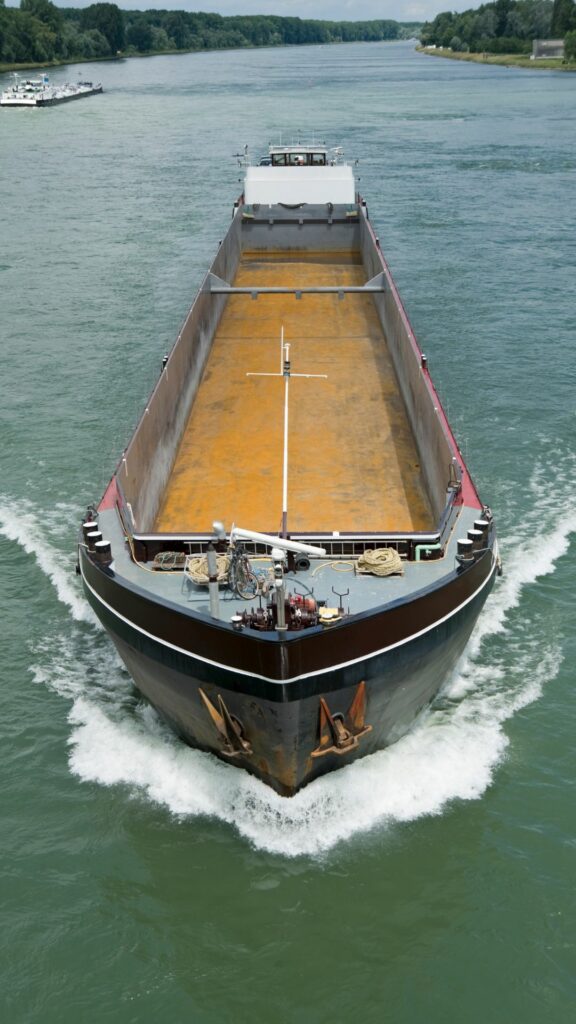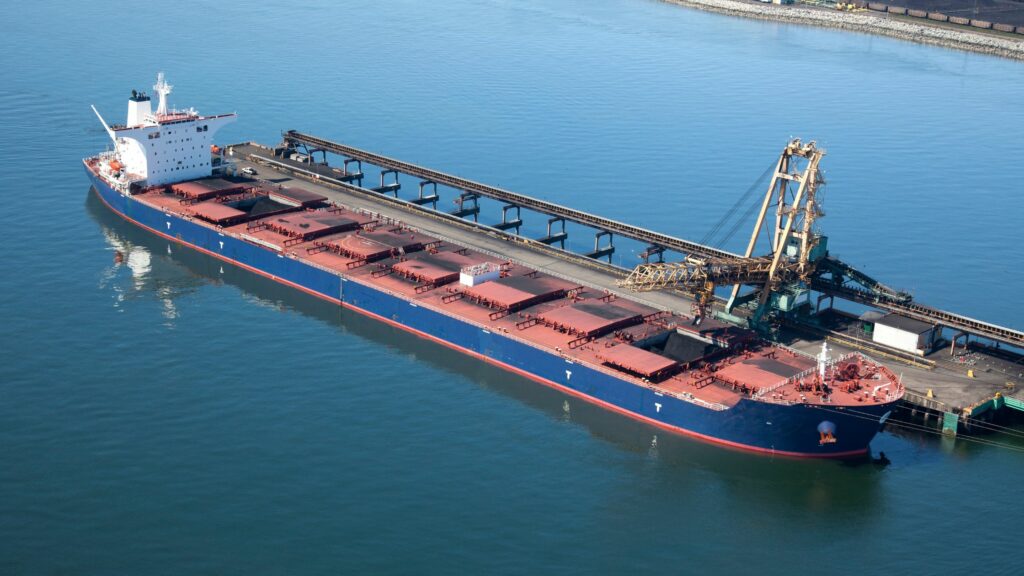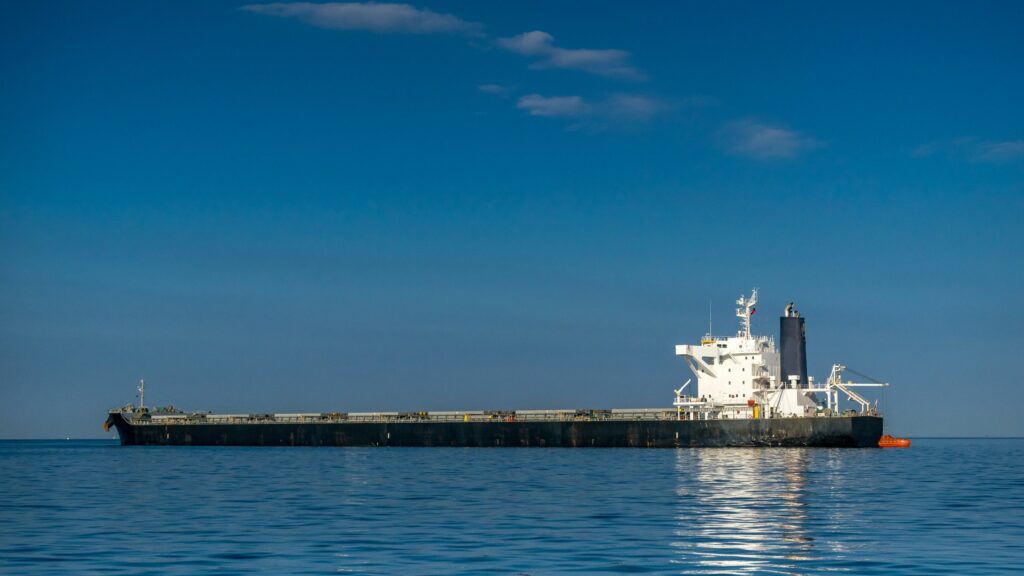Physical Address
304 North Cardinal St.
Dorchester Center, MA 02124

Bareboat chartering, often overshadowed by the more commonly discussed time and voyage charters, carves its niche with unparalleled control and flexibility for the charterer. This unique character sets it apart in the broad spectrum of freight vessel chartering, establishing bareboat chartering as a distinct category within the maritime industry. Key forms of bareboat chartering include leasing a vessel for a long-term period, allowing for a high degree of operational autonomy.
This distinct approach to chartering offers a tailored experience that distinguishes bareboat chartering as a specialized option for those looking to have more direct oversight over the vessel’s operation, maintenance, and crew management. Single-vessel entrepreneurs and large-scale shipping companies alike find value in bareboat charters, each drawn to the specific advantages such as cost efficiency and long-term use. Delving deeper, each aspect of bareboat chartering presents its own set of considerations, from legal and contractual obligations to financial structures and insurance requirements.
The following sections will explore these facets in detail, providing a comprehensive understanding of what makes bareboat chartering a strategic choice for entities looking to maximize their control and minimize their costs in the competitive world of shipping.
A Bareboat Charter distinguishes itself in the maritime industry as an arrangement where a vessel is leased to a charterer without crew or provisions. This grants the charterer full control over the vessel for a predetermined period, making them responsible for its operation, including hiring the crew, managing all operational costs, and overseeing maintenance. It’s akin to renting a property, where the lessee becomes responsible for upkeep and utilities, but in the maritime context.
The key characteristics of a bareboat charter include:
Bareboat charters are versatile and can be tailored to meet the specific needs of various industries and operational requirements. Here are some examples of typical lease durations and the common routes or industries where bareboat charters are prevalent:
| Lease Duration | Common Industries | Typical Routes |
|---|---|---|
| 1-5 years | Offshore Energy | Global, often involving oil and gas exploration areas |
| 3-10 years | Bulk Cargo Transport | Major bulk trade routes, e.g., Australia to China for iron ore |
| 2-7 years | Container Shipping | Trans-Pacific, Trans-Atlantic, and Asia-Europe routes |
| 1-3 years | Cruise and Leisure | Mediterranean, Caribbean, and other tourist-heavy sea routes |
The Bareboat Charter is underpinned by the Charter Party Agreement, a pivotal document that outlines the obligations and rights of both the charterer and the vessel owner. This contract is essential, providing a clear legal framework for the chartering arrangement. For the charterer, obligations are extensive and include:
The vessel owner has a different set of responsibilities, primarily focused on:
This legal framework not only delineates each party’s responsibilities but also establishes mechanisms for dispute resolution and terms for termination of the agreement. Understanding these contractual aspects is vital for both parties to navigate the complexities of bareboat chartering successfully, ensuring a beneficial arrangement for both the charterer and the owner.
To illustrate the complexities of these agreements, here are examples of common clauses found in Charter Party Agreements:
In the event of any dispute arising out of or in connection with this charter party, the parties agree to first seek resolution through mediation. If mediation is unsuccessful, the dispute shall be referred to and finally resolved by arbitration under the London Maritime Arbitrators Association (LMAA) Terms, which are deemed to be incorporated by reference into this clause. The place of arbitration shall be London, England.
This charter may be terminated by either party upon sixty (60) days written notice to the other party. In the event of termination, the charterer shall return the vessel to the owner in the same condition as received, fair wear and tear excepted. Should the charterer fail to comply with any of the obligations under this agreement, including but not limited to, payment terms and maintenance of the vessel, the owner reserves the right to terminate the charter immediately without prejudice to any other rights or remedies.
Understanding financial considerations of a Bareboat Charter demands a deep dive into its cost structure, payment terms, and insurance requirements. These elements are critical for ensuring both the financial viability of the chartering agreement and compliance with legal standards. The cost structure of a bareboat charter is comprehensive, covering the lease payments for the vessel and operational costs such as fuel, port fees, crew salaries, and maintenance expenses.
These costs need to be budgeted and managed by the charterer, who bears full financial responsibility during the charter term. Payment terms, outlined in the Charter Party Agreement, specify the schedule and conditions under which the charterer must make payments to the vessel owner. Adherence to these terms is crucial for maintaining a positive relationship between the charterer and the owner, and for the avoidance of legal disputes.
Insurance requirements constitute a significant aspect of the financial considerations, safeguarding both the charterer and the owner against potential financial losses from unforeseen incidents. The charterer is generally required to obtain marine insurance, which includes hull and machinery insurance and protection and indemnity (P&I) coverage, among other policies, depending on the specifics of the charter agreement and the vessel’s intended use. Together, these financial considerations form the economic backbone of a bareboat charter, emphasizing the importance of financial awareness and preparedness for both parties involved in the chartering process.
To provide a clearer understanding of the financial considerations, the following table outlines typical costs associated with bareboat chartering, along with common insurance requirements:
| Cost Category | Description | Typical Range |
|---|---|---|
| Lease Payments | Monthly or annual payments for the lease of the vessel | $20,000 – $200,000 |
| Operational Costs | Includes fuel, port fees, crew salaries, and maintenance expenses | $10,000 – $50,000 monthly |
| Insurance Premiums | Hull and Machinery (H&M), Protection & Indemnity (P&I), and other coverages | $5,000 – $30,000 annually |
| Insurance Type | Coverage | Required By |
| ————————- | ——————————————————————————— | —————————- |
| Hull and Machinery (H&M) | Covers physical damage to the vessel | Charterer |
| Protection & Indemnity (P&I) | Liability insurance for third-party claims related to the operation of the vessel | Charterer |
| Freight, Demurrage, and Defense (FD&D) | Legal costs associated with charter party disputes | Optional, recommended |
Payment Terms Overview:
Understanding these financial obligations and insurance requirements is crucial for charterers to effectively budget and plan for a bareboat charter operation. This detailed breakdown helps in assessing the overall financial commitment and in making informed decisions regarding risk management and operational planning.

In a Bareboat Charter, the charterer assumes comprehensive operational control over the vessel, a significant transfer of management and decision-making from the owner to the charterer. This control encompasses crew management, maintenance responsibilities, and operational decision-making.
Operational control in a bareboat charter grants the charterer unparalleled freedom in utilizing the vessel according to their objectives. However, it also demands a comprehensive grasp of maritime operations and a dedication to upholding high standards of vessel management.
In a Bareboat Charter, the charterer takes on the critical role of crew management. This responsibility encompasses the selection, hiring, and management of a skilled crew, ensuring they meet all required qualifications and adhere to international maritime labor laws. The charterer is tasked with all employment aspects, including drafting contracts, managing payroll, and providing adequate training to ensure the crew operates the vessel safely and proficiently.
| Vessel Type | Crew Qualifications | Average Crew Costs (Annual) | Certifications Required |
|---|---|---|---|
| Tanker | Specialized training in hazardous materials | $1,200,000 – $2,500,000 | STCW, Tanker Safety, HAZMAT |
| Container Ship | Experience in cargo handling and management | $800,000 – $1,500,000 | STCW, Container Handling Certification |
Under a Bareboat Charter, maintenance responsibilities are a significant obligation of the charterer. This includes conducting routine upkeep, necessary repairs, and ensuring the vessel complies with all safety and environmental standards. Effective maintenance is pivotal not only for avoiding operational interruptions but also for preserving the vessel’s condition as stipulated in the charter party agreement, thereby safeguarding the owner’s asset.
| Maintenance Task | Frequency | Average Cost |
|---|---|---|
| Hull Inspection | Biennially | $50,000 – $100,000 |
| Engine Overhaul | Every 5 years | $200,000 – $500,000 |
| Safety Equipment Check | Annually | $10,000 – $30,000 |
| Paint and Rust Removal | Every 2-3 years | $100,000 – $300,000 |
The charterer is endowed with broad operational decision-making powers, covering strategic choices such as route selection, cargo management, and adherence to maritime regulations. This autonomy enables the charterer to leverage the vessel for commercial gain, necessitating a deep understanding of maritime operations, market dynamics, and regulatory frameworks. Informed decisions in these areas are crucial for optimizing the vessel’s performance and profitability, while mitigating operational risks.
| Decision Type | Scenario | Impact |
|---|---|---|
| Route Optimization | Choosing a shorter or less congested route | Fuel savings of up to 20%, reduced voyage time |
| Cargo Selection | Adhering to vessel stability and compliance standards | Avoidance of penalties, enhanced safety |
Bareboat chartering presents distinct advantages, particularly appealing to those seeking flexibility and control in their maritime operations. The autonomy to make all operational decisions, from crew selection to voyage planning, allows charterers to customize their approach, optimizing vessel use to fit their business model and market conditions. Cost efficiency emerges as another pivotal benefit.
By managing the operational aspects directly, charterers can strategically control expenses, from negotiating contracts to selecting cost-effective routes and managing crew and maintenance costs. This hands-on approach provides an opportunity to enhance profitability through meticulous financial management. Furthermore, long-term use stands out as a key advantage.
Bareboat charters often span extended periods, facilitating sustained operations and allowing for long-term strategic planning. This duration grants charterers the time needed to establish and execute comprehensive shipping strategies without the immediate financial burden of vessel ownership. These benefits collectively underscore why bareboat chartering is a compelling option for businesses aiming to leverage maritime assets with greater autonomy, cost control, and strategic planning capabilities.
Flexibility and control are paramount in bareboat chartering, granting charterers the autonomy to tailor the vessel’s operation to their precise needs. This encompasses the freedom to select the crew, chart the vessel’s course, and make all critical operational decisions. Such flexibility enables charterers to swiftly adapt to market shifts or specific cargo demands, optimizing vessel utilization for peak efficiency and strategic alignment with their business objectives.
Bareboat chartering is synonymous with cost efficiency. Charterers gain direct control over operational expenditures, including but not limited to crew salaries, maintenance operations, and fuel consumption. This oversight allows for the implementation of cost-saving strategies and informed decision-making that directly influences profitability.
Through diligent management of these expenses, charterers can significantly boost the financial performance of their maritime endeavors.
| Cost Category | Bareboat Charter | Time Charter | Savings with Bareboat |
|---|---|---|---|
| Crew Wages | $500,000 | $600,000 | $100,000 |
| Maintenance | $200,000 | Included in Charter Fee | Variable |
| Insurance | $50,000 | Included in Charter Fee | Variable |
| Operational Flexibility | High | Moderate | N/A |
| Total Cost | $750,000 | $1,000,000 (Estimated) | $250,000 |
The long-term use benefit of bareboat chartering provides charterers with the opportunity for prolonged operational planning and execution, free from the financial and logistical burdens associated with shorter charter arrangements or outright vessel ownership. This extended timeframe is invaluable for cementing stable operations, enhancing market presence, and driving sustained business growth, thereby offering a strategic advantage in the competitive maritime sector.

While bareboat chartering presents considerable advantages, it is not without its challenges. High initial costs, operational risks, and the maintenance burden stand out as significant hurdles, each requiring careful consideration and planning by potential charterers. These disadvantages underscore the necessity for meticulous planning and robust risk management strategies for entities considering bareboat chartering as a viable option for their maritime operations.
High initial costs pose a significant barrier in bareboat chartering. Charterers are required to make considerable upfront financial commitments, such as deposits and initial lease payments, even before gaining operational control of the vessel. This, coupled with the obligation to cover all operational expenses from the start, demands extensive financial planning and resource management, placing a heavy financial burden on charterers right from the outset.
| Cost Component | Bareboat Charter | Time Charter |
|---|---|---|
| Initial Deposit | $100,000 – $500,000 | $50,000 – $200,000 |
| Lease Payments | $20,000/month | $25,000/month (includes some operational costs) |
| Crew Wages | $50,000/month | Included in charter fee |
| Maintenance | Variable, charterer’s responsibility | Included in charter fee |
Operational risks in bareboat chartering encompass a wide range of potential issues, from compliance with maritime regulations and safety standards to environmental laws. The charterer’s autonomy over the vessel’s operations means they are directly responsible for any legal, financial, or reputational repercussions resulting from operational failures.
A charterer, SeaTrans Logistics, faced significant legal challenges when one of their bareboat chartered vessels was found to be non-compliant with international environmental regulations. The resulting fines and legal fees amounted to over $1 million, highlighting the potential financial and reputational risks associated with operational oversights in bareboat chartering.
The maintenance burden in a bareboat charter scenario is a considerable responsibility that rests entirely on the charterer. They are tasked with ensuring that the vessel is not only maintained to a high standard but also meets all regulatory compliance requirements. This involves both routine maintenance and addressing unforeseen repairs, which can lead to unexpected financial outlays.
When comparing bareboat chartering to other forms of vessel chartering, its distinctive features within the maritime industry become evident. Unlike time charters or voyage charters, where the vessel owner maintains operational control and responsibility for crew and voyage execution, bareboat chartering shifts full operational control to the charterer. This includes crew management and maintenance responsibilities, offering charterers a level of flexibility and autonomy not found in other charter types.
In a time charter, the charterer leases the vessel for a specified period, with the owner managing crewing, maintenance, and insurance. This arrangement offers a balance between operational control and financial responsibility, providing a compromise for those seeking some degree of control without the full burden of vessel management. Voyage charters represent a different approach, with the vessel being chartered for a single voyage.
Here, the owner is responsible for the vessel’s operation and associated voyage costs, allowing the charterer a more hands-off experience compared to bareboat chartering. Understanding these key differences is essential for businesses in selecting the chartering arrangement that best aligns with their operational objectives and risk management strategies. This choice involves weighing the trade-offs between operational control, financial commitment, and risk exposure to find the most suitable chartering solution.
In the maritime chartering landscape, bareboat charters and time charters present distinct options based on control and responsibility. A bareboat charter grants the charterer full operational control, including the selection and management of the crew, maintenance of the vessel, and all related operational expenses. This level of autonomy demands a comprehensive understanding of maritime operations and entails a higher degree of risk and financial obligation for the charterer.
On the other hand, a time charter allows the charterer to lease the vessel for a specific duration, with the vessel’s owner retaining responsibility for the crew and maintenance. The charterer pays a rate that typically covers the lease of the vessel, while operational costs like fuel and port charges are additional, striking a balance between operational control and minimized ownership responsibilities.
The contrast between bareboat charters and voyage charters underscores the varying degrees of operational involvement and financial commitment required from the charterer. In a voyage charter, the charterer hires the vessel for a single journey, with the vessel’s owner managing all aspects of the voyage, including navigation and crewing. The charterer’s primary responsibility is to provide the cargo and pay the freight rate, offering a straightforward, low-commitment approach to chartering.
Conversely, bareboat charters place the charterer in the position of acting owner, responsible for the comprehensive management of the vessel, from operational decisions to the full financial and legal liabilities. This arrangement offers the highest level of control but also requires significant maritime expertise and a willingness to assume a broad spectrum of operational risks.
A Bareboat Charter involves leasing a vessel without crew or provisions, granting the charterer full control over its operation, including hiring the crew and managing all operational costs. In contrast, a Lump Sum Charter is an agreement where the charterer pays a fixed fee for the transportation of cargo, with the vessel owner handling the crew and operational responsibilities. Bareboat charters offer maximum operational control and responsibility, while lump sum charters provide a straightforward, all-inclusive payment structure.